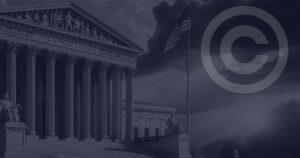 Earlier this month the U.S. Supreme Court answered the question of when a copyright plaintiff must file an infringement claim or be barred from suing by statute of limitations. The case was Warner Chappell v. Nealy Music, Inc.
Earlier this month the U.S. Supreme Court answered the question of when a copyright plaintiff must file an infringement claim or be barred from suing by statute of limitations. The case was Warner Chappell v. Nealy Music, Inc.
The controversy arose because the U.S. Circuit Courts of Appeal were in disagreement whether limitations under 17 U.S.C. Section 507(b) required that suit be filed within three years of the infringing event or whether a plaintiff could sue when it discovered, or should have discovered, the infringement even though beyond the three-year limit for suit.
How this question was answered might be the difference between being able to pursue a claim that arose more than three years before suit was filed. As it was answered, the three-year statute of limitations is not an absolute bar to filing suit in every case of infringement.
The court held that the time for filing suit is not an inflexibly applied three year period, commencing with the act of infringement complained of. Instead, Justice Elena Kagan wrote that the Copyright Act allows a plaintiff to recover monetary damages for any timely infringement claim, regardless of when the infringement occurred.
The operative word, however, is “timely” and Nealy held that the discovery rule governs the timeliness of copyright claims. That means the claim accrues when a plaintiff discovers or should have discovered using reasonable means that the infringement occurred; the claim does not accrue when the infringement actually happened so as to cause limitations to run and suit to be barred.
Once it was determined that limitations had not run, the court turned to the period in which a plaintiff can recover damages, whether statutory or the infringer’s profits and the plaintiff’s damages. The decision held that the Copyright Act contains no time-based limit on a monetary recovery; as long as an infringement claim is timely, the plaintiff can recover damages accruing back to the earliest act of infringement.
Simply put, if the infringement commenced or occurred 12 years back, and the facts establish the plaintiff was not aware and reasonably should not have been aware, the damage claim can reach back 12 years.
Clearly, this holding opens the door for infringement claims that many circuits barred on the grounds that the acts of infringement occurred more than three years before suit was filed. And, Nealy can substantially increase the monetary risks for defendants whose infringing acts began three years prior to suit being filed.
Still, a copyright plaintiff must be vigilant and cannot act in willful blindness to acts of infringement and claim they missed it. Whether the plaintiff knew or, more importantly, should have known that a defendant infringed the work is a question of fact, and an important issue for discovery efforts.
Fact finders will determine whether the plaintiff acted reasonably under the circumstances to discover the infringement. Once the plaintiff knows, or has reason to know, the three-year copyright statute of limitations begins to run.
James B. Astrachan is a partner at Goodell, DeVries, Leech & Dann, LLP and taught trademark and unfair competition law at University of Maryland and University of Baltimore law schools for 23 years.
This article was originally published in The Daily Record.
